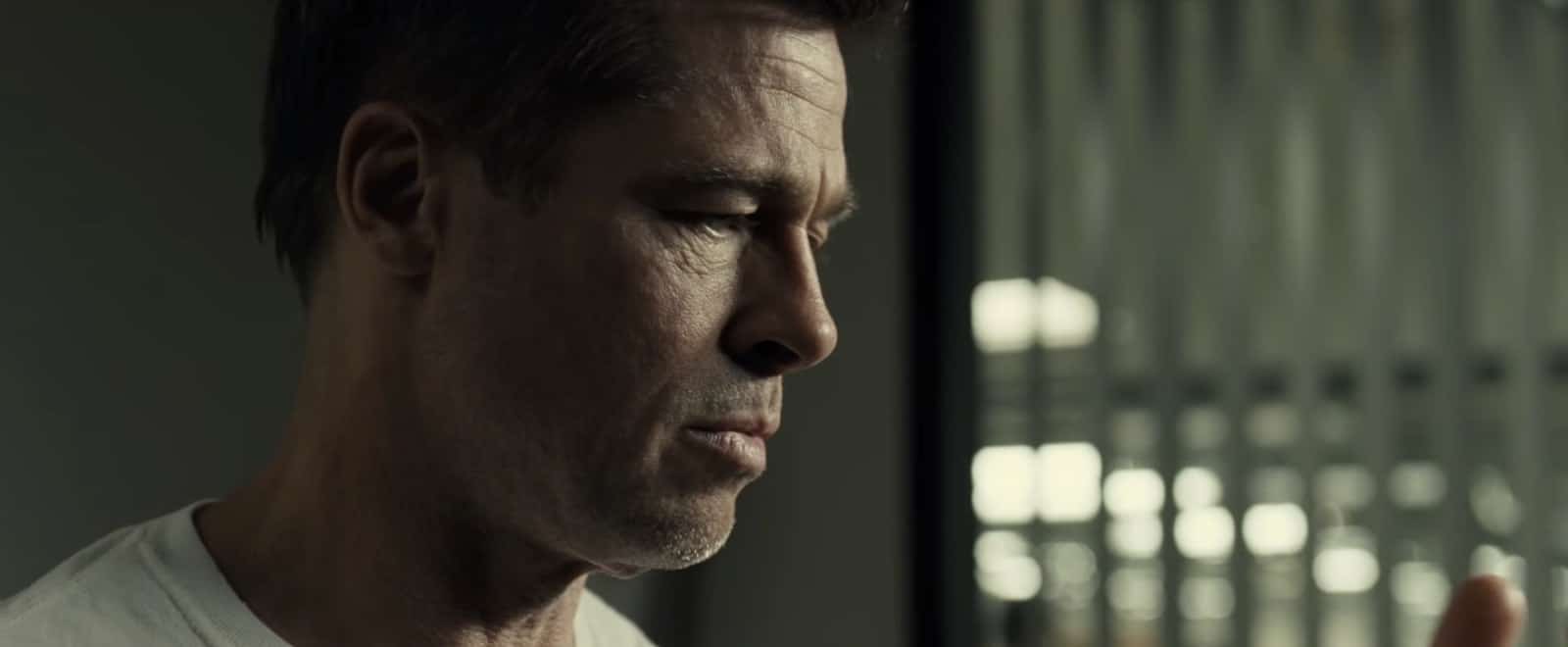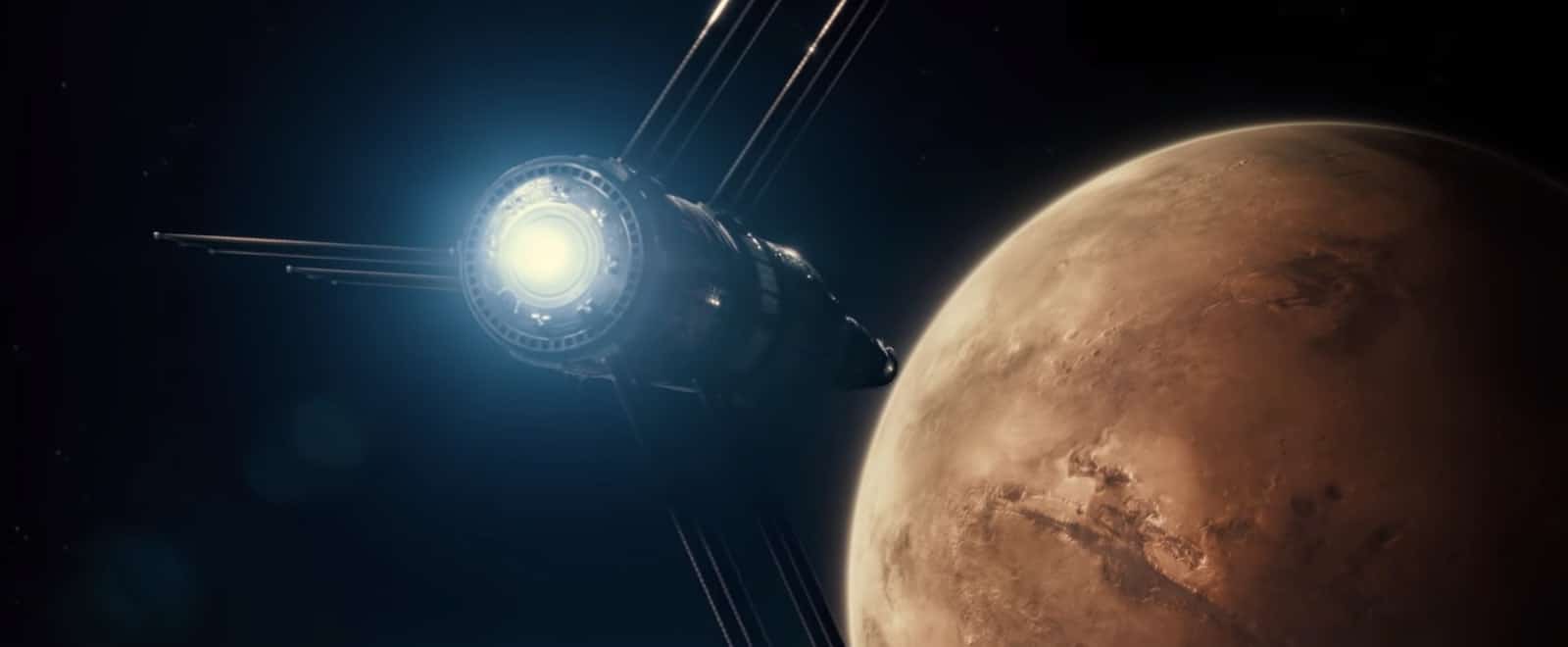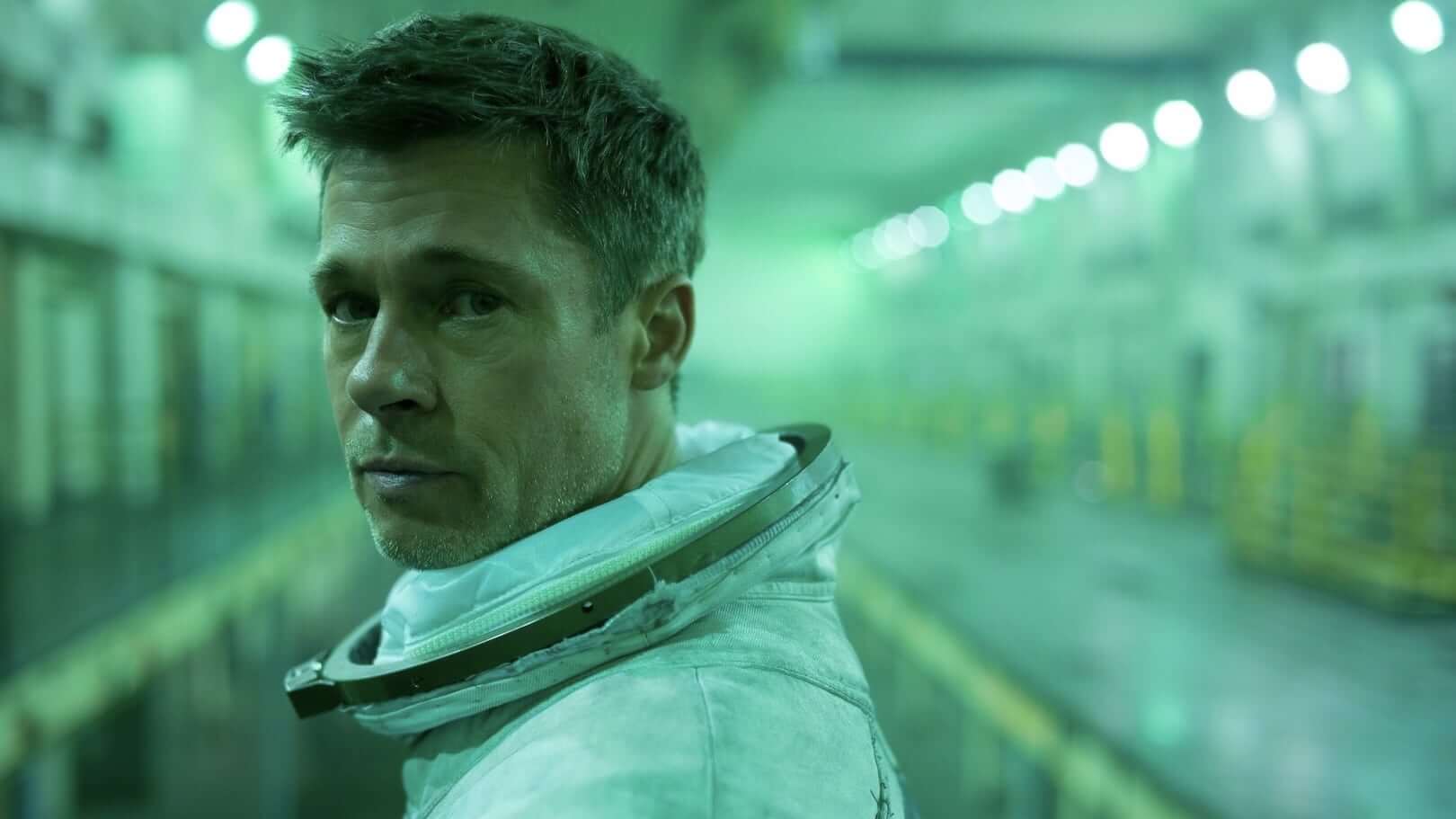James Gray’s new film Ad Astra is a visually stunning journey through our solar system that explores concepts like solitude, commitment, and a focus on the essential to the exclusion of all else.
Precision.
That’s the word that immediately comes to mind when watching this film. Both from the impressive direction from James Gray to the flawless cinematography from Hoyte Van Hoytema, but what really stands out is Brad Pitt’s precisely measured and uniquely powerful performance.
Ad Astra Movie Trailer
Story & Script
Once upon a time...
Roy McBride (Brad Pitt) is the perfect astronaut. He’s the consummate professional with an unreasonably steady heart rate and consistently sound psych evaluations, but that’s not all. Roy is also the son of the legendary H. Clifford McBride (Tommy Lee Jones) who helmed SpaceCom’s Lima project — the first mission to ever travel beyond Jupiter, Saturn, and eventually settling somewhere near Neptune (constantly referring to Uranus would trigger undesirable images).
In a really exciting opening sequence, a sudden electrical surge forces Roy to jump from the impressive international space antennae. This surge has done considerable damage across the globe, which we don’t really get to see or experience, and prompts SpaceCom to send Roy on a classified mission to the origin of these disturbances. When debriefed, Roy learns his father may actually still be alive, and in fact, SpaceCom believes H. Clifford to be the culprit behind the massive destruction.
Roy is soon joined by H. Clifford’s old classmate and colleague, Col. Pruitt (played by Donald Sutherland) who comes in as the second Space Cowboys cast member after Tommy Lee Jones. Note that a third cast member from Space Cowboys, Loren Dean, also shows up later.
Roy and Pruitt must make the journey to Neptune with quick stops on both the Earth’s Moon and Mars, the only place unaffected by the surge.
It’s a good, straightforward script that stays mostly logical but goes really light on the world-building, which is funny since this is rarely the case for the sci-fi genre. There are light mentions of “mining wars on the moon” which are virtually absent from the film. There’s also an odd moment where Roy pays $125 for the “pillow and blanket” package on his commercial flight to the moon, which is confusing since he’s on a classified mission on behalf of SpaceCom (future NASA?).
My chief criticism is that the characters all seemed rather thin. Each of the ancillary characters seems to just simply exist, with short references to their backstory and connections to H. Clifford that we don’t get to see.
Roy narrates his feelings and observations throughout the film with the occasional psych evaluation where he's forced to describe his mood throughout the journey. This has the added benefit of giving the viewer little progress reports that provide insight into his emotional state, but Pitt’s acting says more than any of the on-the-nose dialogue.
There was one great monologue about internal rage, and how it’s naturally replaced by fear. The mission almost doubles as a form of active therapy via an adventurous journey, a similar concept explored by Gray in the Lost City of Z.
The script was co-written by James Gray and Ethan Gross, who has previous writing credits that include the feature film Klepto, and four episodes of J.J. Abrams’ Fringe (with 44 episodes of executive story editor) before his screenplay for Ad Astra was produced for $87,000,000, directed by a blossoming auteur, as well as starring arguably one of the biggest movie stars in the last 25 years.
Despite tiny problem areas here and there, Gross and Gray do a really good job with the story and touch on unique concepts that most screenplays set in outer space seem to avoid.

Roy McBride ventures out
This includes loneliness and commitment to exploration at the cost of one’s own safety. I found myself confused with the plot decisions at times, finding subtext that seemed oddly placed (an enraged research monkey à la 28 Days Later and perhaps a hint of 2001: A Space Odyssey) along with a third act that left me a bit unsatisfied.
Fortunately, I brought a Snickers bar with me to the theatre.
Did You Know?
Ad Astra is a latin phrase that, when translated into English, means "to the stars".
Entertainment Value
Let's all go to the movies
I was entertained by Ad Astra, and the movie didn’t seem desperate to entertain like many sci-fi and space exploration films. I’m not criticizing this at all. In fact, I admire it. This is a mature film, made for adults, and has zero desire to appeal to screaming children and teens hopped up on Tide pods and berry blast vape oil.
I found myself compelled to say “wow” a few times during the film, mostly during the opening sequence as well as a few other scenes that featured the aforementioned electrical surges. The sound design pops.

Roy McBride in deep thought
There is one scene that occurs after Roy has to sneak onto a shuttle that happened to tickled me pink, but I can understand if it wouldn’t land the same way for most viewers. That’s all I’ll say for now.
My eyes never left the screen (except to unwrap my deafening Snickers bar) which is a great sign for the entertainment value of any movie. The moments that had me shrugging my shoulders came in the third act.
I was so invested in Roy and the filmmaking that I was a bit disappointed in some of the overall story decisions, but they aren’t disqualifying.
Related Posts
Filmmaking Craft
Skills on display
There were some really cool filmmaking choices I noticed in the film. One comes early in the movie as Roy watches his lonely wife go to leave, presumably for good, and Gray intentionally keeps her out of focus.
It’s a visual signal that Roy has but one goal and that personal relationships, even a marriage, only serve to distract. The apple doesn’t fall far from the tree, nor the international space antennae.
Another interesting visual decision was the use of POV shots, giving us the occasional first-person view of Roy’s journey. This is especially effective when combined with the use of pitch darkness, even when inside the various shuttles, underground bases, and space stations.

Shuttle approaching Mars
As mentioned before, the cinematography was gorgeous and seemed to share a similar aesthetic with Roger Deakins and Bladerunner 2049.
The absence of sound and light seems to be a recurring theme, along with an artificial connection to Earth, both emotionally or visually.
I’m pleased to say that nothing ever seemed fake or computer-generated, even though we all know certain moments were. Gray keeps things as authentic as humanly possible. This includes a fun car chase on the surface of the Earth’s moon that unfortunately seemed to just… end.
One thing that Ad Astra did a great job with was the sound design.
The whole film, even when on earth, seemed eerily quiet. There was a purity of sound that I’ve never experienced before, at least not in the theatre, as well as a distinct lack of music and this gives way to emotional interpretation rather than a narrow expression. That’s not to say there is zero music, but the use of silence proved to be an effective filmmaking choice that has long been untapped in space flicks.
The absolute best sequence came during the psychologically exhausting and trippy 3-month long float from Mars to Neptune, which summoned really interesting theories about the film’s possible resolution that, unfortunately, were more compelling than what actually came to be.
I suppose that’s entirely subjective, but hey… it’s OUR movie review.
BY THE NUMBERS
"Ad Astra"
- Director: James Gray
- Writer: Ethan Gross, James Gray
- Released: September 20, 2019
- Budget: $87 million (approx.)
Longevity
In the long run
How does a film ensure it works no matter the time period? Well, I think you have to stay as universal as possible and keep to themes that human beings can never escape no matter how hard they try.
Ad Astra is a really great movie to watch, but I’m not sure it has the same rewatch appeal as similar films like Stanley Kubrick's 2001: A Space Odyssey or even Christopher Nolan’s Interstellar.
It may be that the film doesn’t conjure a sense of mystery. What you see is what you get. Where other films make you want to go out into space to discover the unknown, the plot of Ad Astra almost seems like humanity took a disappointing vacation to see the world's biggest ball of yarn. I enjoyed the trip and the experience, and my Snickers, but I want to be inspired to keep going, but this film wants us to stay here on Earth.
There is merit in focusing on our planet since it’s the only one we’ve got.
Ad Astra asks us to stop romanticizing the unknown for the love and connection that actually exists here on Earth. It doesn’t want us to fall prey to a “grass is always greener” outlook, and serves a thoughtful antithesis to a movie like Interstellar, which suggests the answer to all of our problems lies somewhere in the stars, close enough to be within reach but just far enough that we haven’t found it… yet.
Ad Astra wants you to abandon the “yet” for the “here and now”. It wants you to be present and in the moment. It's a worthy thesis, but if we didn’t have fearless explorers like the McBrides… where would we be now?